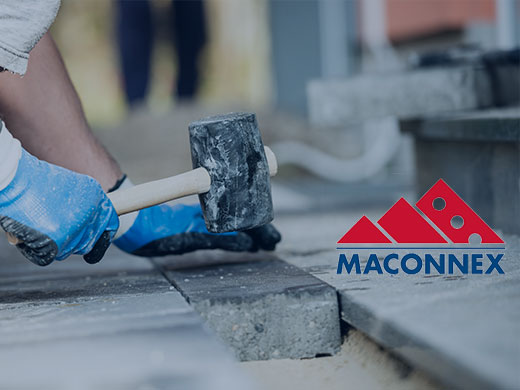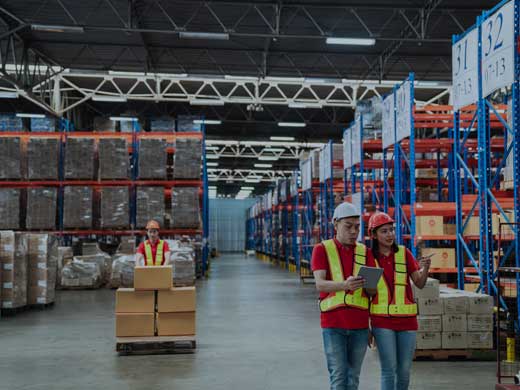Published : 08/06/2023
Customer
An ambitious acquisition slowed down and exponentially complicated Maçonnex’s operations. Adding five branch locations and about 100 employees turned the Quebec-based distributor into a “sluggish bureaucracy.” As one of the largest distributors of exterior siding, landscaping products, stoves, and fireplaces in Quebec, the company was selling 2,000 to 3,000 products per day.
To achieve its goals, Maçonnex could not afford to be sluggish. So, Chantal Bergeron, Director of Operations at Maçonnex, led a digital transformation. We spoke to him to learn more about the process. Our conversation has been edited for brevity and clarity.
What event triggered your digital transformation?
A: The last straw, or the beginning of the last straw, was our acquisition of Montreal Brick and Stone (Montréal Brique et Pierre). They had five branch locations and about 100 employees in Greater Montreal (Canada). Strategically, this expansion enabled us to break into a new market and continue our growth.
At the time, we were managing operations with an ERP that was 25 years old. So, I’ve got to say that we always had a digital mindset, even way back then. This legacy system had over 250 customizations, each one costing thousands of dollars. But the software was on its last legs. For scheduling shipping, we used Google Calendar, and for accounting, Excel.
What challenges did you face after acquiring five branch locations?
A: We became a sluggish bureaucracy. It’s painful to say it, but with all the complex inter-branch transactions, that’s what we were. Since each branch was considered a separate company, each location was working in a silo. Inter-branch transactions were complex. We didn’t have centralized purchasing or a system for inter-company transfers, so our acquisition created zero synergies. Also, we had thousands more products to deal with, which complicated our operations dramatically.
Our order management was pre-historic, to say the least. Orders came through marketing first, which then sent them to a salesperson, who then entered the information in purchase orders. Only then did sales send the orders to operations. We had visibility into how the business was doing every 25 or 30 days, at the end of the accounting period. This means decisions based on that data were one month late.
What last straw led to the digital transformation?
A: Some very experienced managers, who had been with the company a long time, hit retirement age and left the company in a relatively short period. Just like that, a ton of knowledge about how the company worked went out the door. That really threw a wrench in the works because the new people we hired didn’t have enough time to benefit from the company knowledge of our departing staff. That’s when I started looking for an ERP solution.
How did you start the digital transformation process?
A: I recruited an ERP implementation committee that included both managers and staff from every business function, like sales, purchasing, operations, and so on. As a group, we defined what we wanted the ERP software to do for us.
What were your goals for the digital transformation?
A: Our branch locations had to stop operating as silos. We wanted to be more flexible and agile in the way we operated, so the ERP had to facilitate all that by helping us manage as a multi-company organization, with multiple warehouses. We also wanted the system to be intuitive. People from many levels were going to be accessing the ERP. The last thing we wanted was to have our team resist the new system because the software wasn’t user-friendly.
What impact on business performance did you see after the ERP implementation?
A: We streamlined our operations, that was the biggest benefit. All our processes accelerated dramatically. We kept the same staff and equipment, but we needed fewer managers. Take purchasing for example. Before the digital transformation, we had six buyers, and now we have two. The four other buyers were transferred to jobs in operations and in the field to help improve our efficiency.
Order-taking really accelerated. Earlier, I told you about the roundabout way we handled orders. That process led to some big bottlenecks in order preparation and product delivery. Today, our customers place orders directly into the system, which sends them automatically to our operations team.
What other results did you see?
A: Inventory control was no longer a big concern. We carry about 50,000 products, distributed in six locations. In the past, we carried way too much stock and had a lot of returns, which hurt our bottom line.
We created a database to categorize the products more specifically and identify the location of each SKU. As I said before, each branch location used to work independently. But now, with centralized inventory, we can process orders faster and update customers on delivery time. Customers love this!
We were able to work remotely during the pandemic. Luckily, we had Fidelio in place just before the lockdowns, so many of us were able to work remotely (through Fidelio’s cloud). We wouldn’t have survived if we had been using our old ERP.
So overall, our operations were significantly more productive, and logistically everything moved so much faster.
What’s next for Maçonnex?
A: In the short term, we want to continue to update our website’s capacity for transactions with our retail customers. We want these customers to access their accounts, invoices, and other information. This web investment will open up more opportunities for sales and efficiencies.
Since our digital transformation, our revenues have gone up 50%, even after we closed two of our branches. Today, sales are increasing by 30% to 40% per year, without expanding our sales team that much.
Over the next months, we have to adapt our organizational structure to continue integrating the company we acquired. Because of Fidelio, we expect that to be an orderly and efficient operation.
Check out our guide : ''The Ultimate ERP Selection Guide for Wholesale Distribution'' to help you make your ERP selection.
Are you a manufacturer or a distributor? To find out more about the various functionalities and flexibility of the ERP. Fidelio system, contact us.






